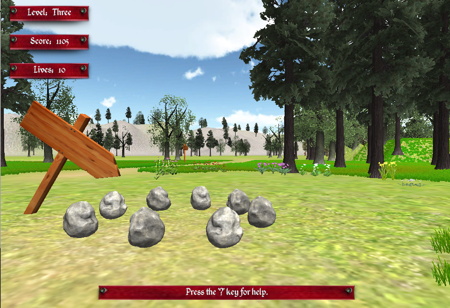We have come a long way with math games, from our start with Spirit Lake: The Game. I will never be able to say thank you enough to the teachers at Turtle Mountain and Fish Lake for helping us with our very buggy first version.

How you like me now?
I’ll be honest, when we started five years ago, we had a lot to learn. We were afflicted by the dreaded, “It Worked on My Computer” Syndrome. Another million thanks to the IT staff at schools who helped us install games on all kinds of devices – including those we found were too old to support a 3-D game. Now we have Spirit Lake running on Mac and Windows with an iPad version coming out this fall. Because of what we learned, we made a lot of new games for Chromebook and iPad. We now have nine games for iPad, for example.
I was talking about Spirit Lake, though. First of all, it’s about 9,000 times easier to install now. You can even get it straight from the Microsoft Store. Our videos, which started out as me talking over a PowerPoint are now a combination of animations with students major in sound design doing the audio, and …
… original photos from the Library of Congress and other sources, with narration from members of the tribes represented.
We also added a BUNCH of teacher resources, from clip art to videos to PowerPoint presentations on a variety of topics in elementary mathematics, like long division and number lines.
How we got from there to here
The answer to the question of how we evolved is simple – step by step.
Lesson learned 1: Test on different kinds of computers
We tested our games over and over until we thought they were bug-free. Then, we tested in several classrooms and a couple of computer labs on one reservation and ran into many, many problems. We fixed as many as we could the week we were there, then went back to our offices and fixed dozens more. We had used top of the line Macintosh computers for development. We went home and bought some older Windows computers (and later, Chromebooks to use for other games).
Later, we went to a different reservation and they had different browsers and different computers and we ran into a whole different set of problems.
Lesson learned 2: Make your application as easy to install as possible, and then make it easier
Here is one of those things that isn’t obvious until it hits you between the eyes the first time. When focused on addressing math standards, including accurate history, finding primary sources, writing understandable examples, creating a game, designing artwork, it’s easy to overlook something that isn’t a major problem in your use of the software.
An application taking five minutes to install might be a minor annoyance on your computer, but if it is being installed on 200 computers, that’s about two days’ work, full-time. I’m happy to say we cut installation time by more than 80%.
There’s a lot more but it’s late so I’ll have to pick this up in the next post. I don’t want to put off answering a question that I get asked often, “You could have developed this prototype somewhere else. You didn’t have to do it on a reservation.”
Maybe, but we didn’t. I think given the constant barrage of negative news we read and hear about reservations to emphasize that positive developments are happening as well. We’re developing and testing new technology, involving students in game design, publishing scientific research. Yes, and coming up with some pretty cool games.

